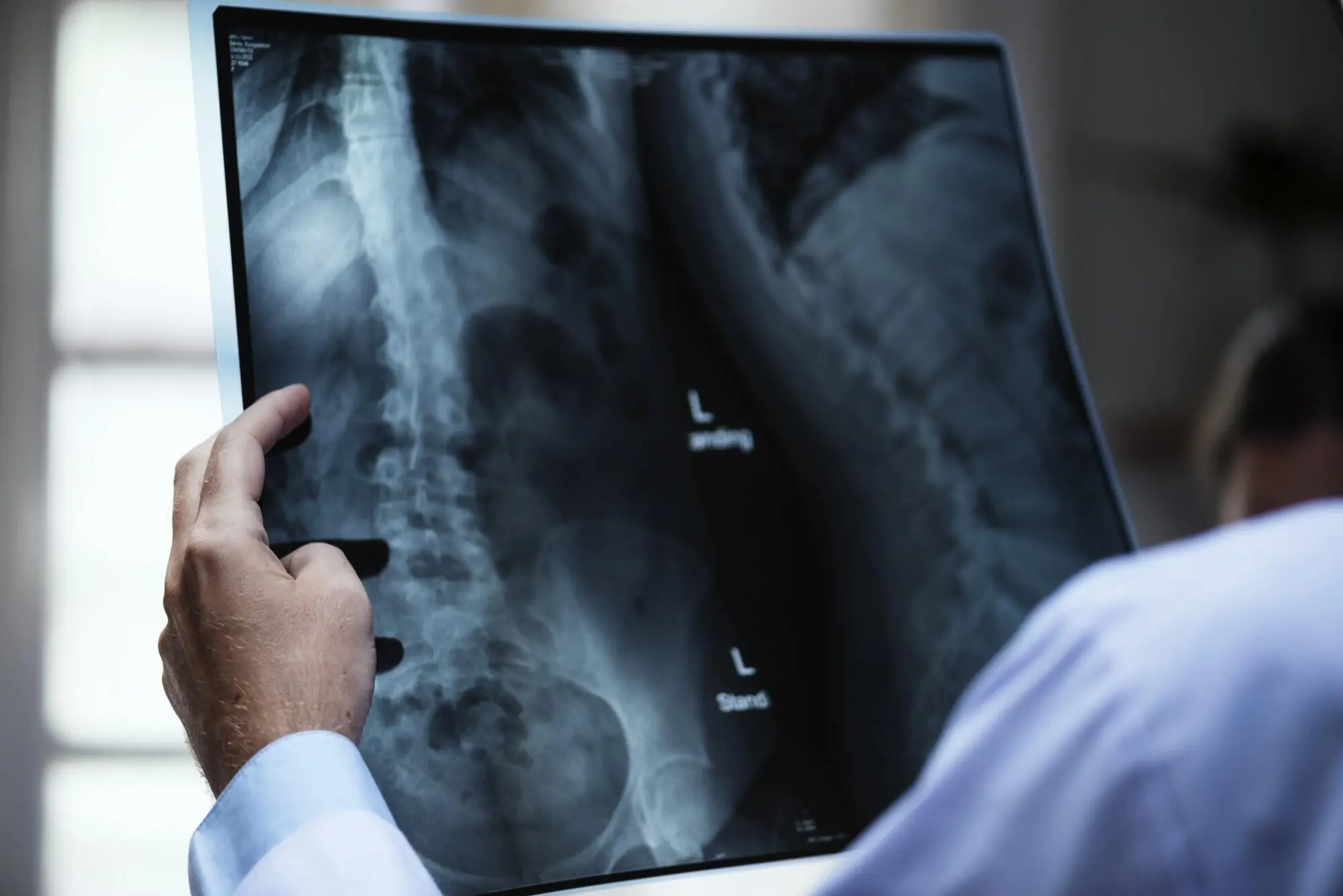HEALTH
Breaking Down the Education and Training Required for Radiology Assistant Jobs

Have you thought about a career as a radiology assistant?
In radiology assistant jobs, you get to use different tech to help doctors. Before you start, you need to learn a few things. We’re here to discuss what these things are.
Ready to learn more? Keep reading to find out how to start your career!
Basic Educational Requirements
One of the first educational requirements to become a radiology assistant is finishing high school. After that, you’ll need to go to college for about two years to get an Associate’s degree.
In college, focus on courses in science and health to prepare for your future job. It’s also a good idea to take classes in communication because talking clearly with patients and doctors is a big part of the job.
After college, you must complete a radiology assistant program. This program teaches you how to use medical machines to take pictures of the inside of the body. These programs ensure that you’re ready to work in a hospital or clinic.
Accredited Radiology Programs
Choosing the right radiology program is very important. Make sure to choose a program approved by a group that checks on these types of schools. This makes sure the education you get is top-notch.
When you’re looking into programs, see if they have hands-on training with real equipment. This experience is key to learning how to take great images.
Also, look for programs that offer help in finding a job after you finish. Some schools connect students with hospitals and clinics to start working right away. With the right program, you’ll be on your way to an exciting career as a radiology assistant.
Clinical Training Experience
After finding the right program, you’ll start learning by doing real work in clinical training. This is where you use what you’ve learned in class on actual patients, under the watchful eyes of experts. You’ll get to work with different machines and see many types of health problems. It’s like a sneak peek of your future job!
Plus, if you’re looking for radiology CE courses, this experience will help you know what skills you want to improve. This hands-on training is super important for becoming a great radiology assistant. You’ll learn a lot and feel more confident when you start your job.
Certification and Licensing
After completing your training, the next step is getting certified and licensed, which is super important. Think of it as your ticket to officially start working. To get certified, you’ll need to take a test that checks everything you’ve learned.
Once you pass this test, you’ll get a certificate that says you’re a professional radiology assistant. But that’s not all – some places also require you to get a license before you can start working. This usually means filling out some forms and maybe even taking another test.
Every state has different rules for this, so it’s a good idea to check what’s needed where you live. Getting certified and licensed might seem tricky, but it’s a big step towards your new career!
Advanced Degree Options
For those wanting to go even further in their radiology assistant career, getting a higher degree is an option. You can aim for a Bachelor’s or even a Master’s degree in radiology or a related field. This extra study will teach you more about the human body and the latest technology in health care.
Plus, you’ll learn how to lead and make important decisions. With more education, you can take on bigger roles and potentially earn more money. Going back to school might take time and hard work, but it can open up new doors and exciting opportunities in your career.
Continuing Education Units
Continuing Education Units (CEUs) are very important for radiology assistants. They are classes that you take even after you start working. These classes help you stay up-to-date with the newest technology and methods in radiology.
It’s a way to keep learning new things that can help in your job. Different states have different rules on how many CEUs you need to keep working.
These classes are also a great chance to meet other radiology assistants and share experiences. By taking CEUs, you make sure you’re always doing your best in your career.
Specialization Certifications
After you’ve worked as a radiology assistant for a while, you might want to focus on a certain area. This is where getting extra certifications can help. These are proof that you know a lot about a specific part of radiology, such as MRI or CT scans.
To get these certifications, you usually have to take another test. Doing this can make your job even more interesting, and you might earn more money, too.
Think about what parts of your job you enjoy the most, and see if you can get certified in that area. It shows everyone that you’re good at what you do.
Soft Skills Development
Beyond the technical skills, becoming a great radiology assistant also means working on your people skills. This includes being able to talk clearly and listen well, so you understand what doctors and patients are telling you.
Showing kindness and patience to people worried or scared about their health is crucial. Teamwork is a big part of the job, too. You’ll often work with other healthcare professionals to take care of patients.
Lastly, being able to solve problems and make decisions quickly will help you a lot in this career. These skills might seem simple, but they’re really important for doing well in your job and helping others.
Prepare Yourself for Radiology Assistant Jobs
Preparing for radiology assistant jobs is like preparing for an exciting adventure. These jobs need you to learn a lot, from school to special training.
Remember, every step you take gets you closer to helping doctors and patients in a cool way using technology. Sticking with it and learning more will make you great at this job. Go for it, and soon you’ll be an awesome radiology assistant!
Did you find this post helpful? If so, head back to our website for more informative content.
HEALTH
Restore Your Smile With Dental Implants: A Simple Guide for Patients

TL;DR
- Dental implants are a popular option to replace missing teeth, which offer promising results.
- Implants look and feel just like natural teeth.
- An experienced dentist guides you through the entire process of getting implants.
- Implants help protect your jawbone and improve your smile.
- With simple daily care, implants can stay strong for years.
Missing teeth can affect your appearance. However, they also make eating difficult and lower your confidence. Often, people are unaware of the significant impact a missing tooth has on their speech and chewing. However, if you too are facing this problem, dental implants can be a perfect solution. Now, more patients are choosing implants as they offer higher comfort, stability and a natural look.
What Are Dental Implants?
These are artificial tooth roots, which are placed into your jawbone and act as a strong base for a replacement tooth. The implant bonds with the bone over time, which makes it very stable. It helps the new tooth stay in place just like a real one. It is also why dental implants have become a trusted solution for tooth loss.
You can visit a skilled dentist Blaine to understand how implants work and if they are the right solution for you. Implants look just like natural teeth and it is why most people cannot even tell the difference after the procedure is complete.
Why Choose Dental Implants?
Dental implants have become a popular choice and there are many reasons behind it. Here are some of their leading benefits:
1. Implants Look and Feel Natural
Dental implants match your natural teeth. They can blend in perfectly because of their shape and color, which helps you smile with confidence.
2. They Protect Your Jawbone
If you have lost a tooth, the bone underneath may begin to weaken. However, implants act just like real roots and prevent it from happening so that your jawbone stays strong and healthy.
3. They Make Eating Easy
Dentures may slip or move, but implants stay fixed in place. You get to enjoy your favorite foods without difficulty.
4. They Are Long-Lasting
Dental implants can last for many years, provided they receive proper care. The reason that many people prefer them over other solutions is that they do not need frequent replacement.
5. They Improve Your Oral Health
Since dental implants do not affect your nearby teeth, they are considered a cleaner and healthier option compared to bridges.
What to Expect During the Procedure
The process of getting dental implants is a series of steps. First, your dentist checks the health of your mouth and jawbone. The implant is placed in the bone if everything looks fine. However, you may need some time to heal before the new tooth is added. The implant takes some time to bond with the jaw.
Your dentist places the crown when the implant is fully healed. A crown is the part that looks like a tooth and is custom-made for you so that it matches your smile.
The process will feel smooth and stress-free if you work with an experienced dentist Blaine. The dentist will guide you at every step.
Caring for Your Dental Implants
The best thing about dental implants is that caring for them is not difficult at all. Rather than needing special tools or treatments, you can follow some simple habits:
- Brush twice a day
- Floss daily
- Visit your dentist for regular checkups
- Avoid chewing hard items such as ice
Your implants stay strong for a long time with good care. Often, people treat their implants just like natural teeth, enjoying a healthy smile for many years.
Are Dental Implants Right for You?
Dental implants are a promising option for most adults. You may be a great candidate if:
- You have one or more missing teeth
- You want a long-lasting solution
- Your jawbone is healthy
- You do not want removable dentures
Your dentist enquires about your medical history, oral health and goals, which helps them create the best treatment plan for you.
Final Thoughts
Dental implants can really change your life. Apart from restoring your smile, they protect your jaw and help you enjoy your favorite foods without any discomfort. If you want a strong and natural-looking tooth replacement, just go for implants. Talk to an experienced dentist to know more about the process and find out if you are a good candidate.
A confident smile can give you a major confidence boost. Dental implants help you enjoy comfort, stability and a beautiful smile every day.
FAQs
1. Are dental implants painful?
Ans. Dental implants are not painful. Most patients experience only mild discomfort during the process. Your dentist uses numbing to keep you comfortable and any soreness generally goes away in a few days.
2. How long do dental implant last?
Ans. Dental implant can last for many years, provided they receive good care. However, regular brushing, flossing and dental checkups are essential to keep them strong.
3. Who can be a suitable candidate for dental implant?
Ans. Generally, adults with missing teeth and healthy gums are good candidates for implants. Your dentist checks your jawbone before starting the treatment.
Curious for more? Check out this related posts that takes your knowledge up a notch.
HEALTH
A Complete Guide to Dental Bridges for a Confident Smile

TL;DR
- A dental bridges fills the gap created due to missing teeth.
- Besides helping you chew better, it improves your smile.
- A dental bridges protects the remaining teeth from shifting.
- A good dentist can guide you on the best type of bridge based on your needs.
- While the procedure is simple, it offers long-term benefits.
A missing tooth can affect your looks and self-confidence. It changes how you eat, speak or feel about yourself. However, there is a trusted solution that can fix this problem. It is a dental bridge. Apart from restoring your attractive smile, it brings back the comfort you once had. Visit an experienced dentist and you will easily find out if this treatment is right for you.
What Is a Dental Bridges?
It is a fixed replacement for missing teeth. It has an artificial tooth in the middle. This artificial tooth is held in its place by the natural tooth on both sides. The support teeth are known as abutment teeth, which help the bridge stay stable and look natural.
Dental bridges can be of different types and the most common ones are traditional bridges, cantilever bridges and Maryland bridges. Your dentist can advise you after checking your mouth which one suits you best.
Why You May Need a Dental Bridge
A missing tooth can cause many problems. You can prevent those issues with the help of a dental bridges. Here are some common reasons that dentists recommend this treatment:
1. To Improve Chewing
Chewing can be harder with missing teeth. However, a bridge helps restore your normal biting force. You can again enjoy your meals without any discomfort.
2. To Restore Your Smile
Your smile has a major role in your self-confidence. A dental bridge fills the empty space that is left by missing teeth and makes your smile beautiful again.
3. To Prevent Teeth From Shifting
Nearby teeth can shift out of place due to a gap. Besides jaw pain, it can cause bite problems. A bridge helps maintain the correct position of your teeth.
4. To Help With Speech
Missing teeth can prevent you from speaking with clarity. However, you can speak clearly again once the gaps are filled.
What to Expect During the Procedure
You can visit a skilled dentist Hopkins MN. The process is simple and smooth. Usually, two visits are required to get a dental bridge. Here is what typically happens during your visits:
First Visit
During the first visit, your dentist checks your teeth and gums. They also shape the support teeth to help fit the bridge properly. Then, they take impressions of your mouth. These are sent to a lab to create a custom bridge for you.
While the permanent bridge is being made, you may receive a temporary bridge. It protects the exposed teeth and keeps your smile looking good.
Second Visit
Your dentist removes the temporary bridge once your custom bridge is ready. After placing the new dental bridge, they check its fit and make adjustments to ensure it feels comfortable. The bridge is cemented in place when everything looks fine. The process is mostly painless and quick.
Benefits of Getting a Dental Bridge
Getting a dental bridge offers many benefits. While it restores proper chewing, it also improves your appearance. Apart from that, it keeps your teeth aligned, offers long-term durability and boosts your confidence.
With proper care, most bridges can last several years. You can easily maintain it with brushing, flossing and regular dental visits.
How to Care for Your Dental Bridge
You need to take proper care of your bridge to keep it strong and clean. Here are some simple tips to follow:
- Brush twice daily with a soft toothbrush.
- Floss gently around the bridge.
- Use a floss threader if needed.
- Visit your dentist Hopkins MN for routine checkups.
- Avoid very hard or sticky foods.
These habits protect both your bridge and your natural teeth.
Is a Dental Bridge Right for You?
A dental bridge may be a great solution for those with one or more missing teeth. Besides being affordable and reliable, it looks natural. Talk to a trusted dental expert to know if it is right for you. A dentist can examine your mouth to recommend the ideal treatment based on your situation.
Final Thoughts
Missing teeth affect your daily routine. However, you do not need to struggle with it. With a dental bridge, you can easily restore your attractive smile. The bridge improves how you eat, look and speak. It only needs a visit to an experienced dentist and you can enjoy a healthy smile for years.
FAQs
1. How long can a dental bridge last?
Ans. A dental bridge easily lasts 10–15 years with good brushing, flossing, and regular dental checkups.
2. Is getting a dental bridge painful?
Ans. No, the process is generally painless since the dentist uses local anesthesia. In most cases, people feel only mild discomfort.
3. Can I eat normally with a dental bridge?
Ans. Yes, there is a short adjustment period and then you can chew comfortably. You can enjoy most foods with a dental bridge.
Explore the featured post packed with standout value you’ll want to read right now.
HEALTH
Why Choosing a Pediatric Dentist Helps Your Child Build a Healthy Smile

TL;DR
- A pediatric dentist is a specialist in children’s dental care, including infants and teens.
- These specialists can make dental visits comfortable and fun for kids.
- Early dental care in children helps prevent gum issues and cavities. It also helps eliminate the fear of dentists.
- An experienced dentist can support your child’s long-term oral health.
- Regular dental checkups, good brushing habits and a kid-friendly environment can make a major difference in terms of oral care.
Parents want their children to develop good dental habits early since it makes a huge difference in their long-term health. However, they often think about whom to trust with their child’s dental care. While several dentists treat people of all ages, pediatric dentists are especially trained to care for children’s teeth and gums. It is generally not difficult to find a trusted dentist who offers pediatric care for families.
In this post, let’s take a look at why choosing a pediatric dentist is important, how they support your child’s oral health and what to expect during your visits.
What Makes a Pediatric Dentist Special?
The main focus of pediatric dentists are children. These dentists have additional training after dental school to know how kids grow and how their teeth develop at different stages. It is why they are experts in dealing with infants, toddlers, young children and teens.
They usually have bright and colorful offices that are designed to make kids feel comfortable. Many children become nervous during dental visits. However, a pediatric dentist uses calm language, slow steps and fun interactions to reduce their fear. It is also an important reason that many parents prefer a pediatric dentist when it comes to dental care for their children.
Besides other things, a pediatric specialist teaches kids how to care for their teeth. It helps children follow good oral habits at home.
Benefits of Choosing a Pediatric Dentist
Choosing a pediatric specialist can be highly beneficial for your child:
1. Kid-Friendly Environment
When visiting a pediatric dentist, you will find their office to be warm and friendly. There are colorful walls, toys and cartoons that help kids stay relaxed. If children feel comfortable, they will more likely cooperate during dental exams.
2. Expert Understanding of Growth
From birth to adolescence, children’s teeth go through major changes. Pediatric dentists know what happens during these stages and can guide parents on what to expect. They can help with various issues including teething problems, cavities, early tooth loss and more.
3. Preventive Care Focus
Preventing dental problems can be easier compared to fixing them later. A pediatric dentist helps reduce the risk of cavities through fluoride treatments, dental sealants and gentle cleanings. Families can also save money and avoid unnecessary stress through early prevention.
4. A Positive Dental Experience
Kids who visit a pediatric dentist grow up with less dental fears. They learn that dental care can be normal and easy and this healthy mindset continues into their adulthood.
When to Take Your Child to a Dentist
While many parents wait until their child is old enough, experts suggest scheduling the first visit by the time the kid is one year old. This way, problems can be spotted early before they grow too painful.
Those looking for a local provider can search for a Dentist in Osseo with pediatric experience. To keep your child’s smile healthy and bright, you must visit the dentist regularly every six months.
Common Treatments by Pediatric Dentists
Here are some common services you can expect:
- Dental cleanings: Gentle cleanings help remove plaque and keep teeth fresh.
- Cavity treatment: Cavities are common in kids. However, visiting a pediatric dentist can help avoid painful situations.
- Fluoride application: It strengthens enamel and also reduces cavity risk.
- Sealants: It is a protective layer that is applied to molars to prevent decay.
- Growth monitoring: This ensures your child’s teeth are developing properly and there are no alignment issues.
How Parents Can Support Their Child’s Oral Health
Your child’s dental care begins at home. Here are some simple tips to follow:
- Use a child-friendly toothbrush and encourage your child to brush twice daily.
- Use fluoride toothpaste in the proper amount.
- Reduce sugary snacks and drinks.
- Teach your child to rinse after meals.
- You can turn dental visits into a positive experience rather than a scary one.
You can work with a pediatric dentist to ensure your child has a strong foundation for lifelong oral health.
Final Thoughts
One of the best decisions that you can make for your child’s dental health is to choose a good pediatric specialist. These specialists take a gentle approach and create a kid-friendly environment. It helps reduce stress and create positive dental experiences. Whether you are a new parent or just looking for better dental care for your child, you can rely on a pediatric dentist.
For those living nearby, an Osseo dentist with pediatric expertise can provide the care and comfort your child needs. Regular checkups and good dental habits will help your child enjoy a healthy smile for years.
FAQs
Q1. Why should I take my child to a pediatric dentist?
Ans. A pediatric dentist cares for your child’s teeth and knows well how their teeth grow at different stages. They also make dental checkups friendly and comfortable.
Q2. When should my child have their first dental visit?
Ans. You should take your child to the dentist by their first birthday or when the first tooth appears. Early visits can help you prevent dental issues in your child.
Q3. Can an Osseo dentist treat children?
Ans. Yes, many Osseo dentists offer pediatric care and child-friendly dental treatment.
Discover the featured post crafted to inspire, inform, and elevate your thinking.

 ENTERTAINMENT2 weeks ago
ENTERTAINMENT2 weeks agoExploring the Kristen Archives: A Treasure Trove of Erotica and More

 GENERAL4 months ago
GENERAL4 months ago5 Factors That Affect Tattoo Removal Success

 LIFESTYLE9 months ago
LIFESTYLE9 months agoThe Disciplinary Wives Club: Spanking for Love, Not Punishment

 TECHNOLOGY8 months ago
TECHNOLOGY8 months agoBlog Arcy Art: Where Architecture Meets Art

 LIFESTYLE2 months ago
LIFESTYLE2 months agoWho Is Sandra Orlow?

 HEALTH8 months ago
HEALTH8 months agoHappy Hippo Kratom Reviews: Read Before You Buy!

 GENERAL3 weeks ago
GENERAL3 weeks agoEverything About King Von Autopsy Report Details

 ENTERTAINMENT10 months ago
ENTERTAINMENT10 months agoThe Ultimate Guide to Shillong Teer Hit Number: How to Predict Your Next Win












